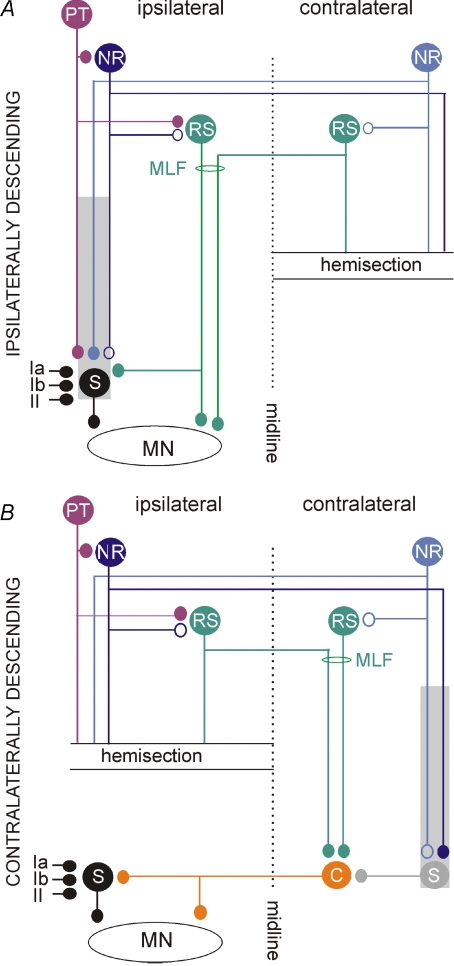Figure 1. Ipsilaterally and contralaterally descending neuronal pathways hypothesized to relay synaptic actions from the ipsilateral red nucleus to hindlimb motoneurones.
Pathways via ipsilaterally (with respect to motoneurones) descending rubrospinal (NR), reticulospinal (RS) and pyramidal tract (PT) neurones with ipsilaterally located spinal relay neurones (S) represented by interneurones with input from group Ia, Ib and II afferents. The shaded area indicates that the spinal relay neurones might also include interneurones and propriospinal neurones spread over the whole length of the spinal cord. B, pathways via contralaterally descending NR and RS neurones and contralaterally located spinal neurones represented by commissural interneurones (C), which cross to the opposite side of the spinal cord, and interneurones, which might activate them; the interneurones might include both segmental interneurones and propriospinal neurones in various segments as indicated by shading. These pathways would thus involve double crossing, first at a supraspinal level and then at a segmental level. In both A and B small filled circles indicate established synaptic connections and the open circles indicate the hypothesized ones. By hemisecting the spinal cord at a low thoracic level we restricted synaptic actions evoked from the ipsilateral NR to those mediated by uncrossed ipsilaterally descending pathways in A and by double crossed contralaterally descending pathways in B.

